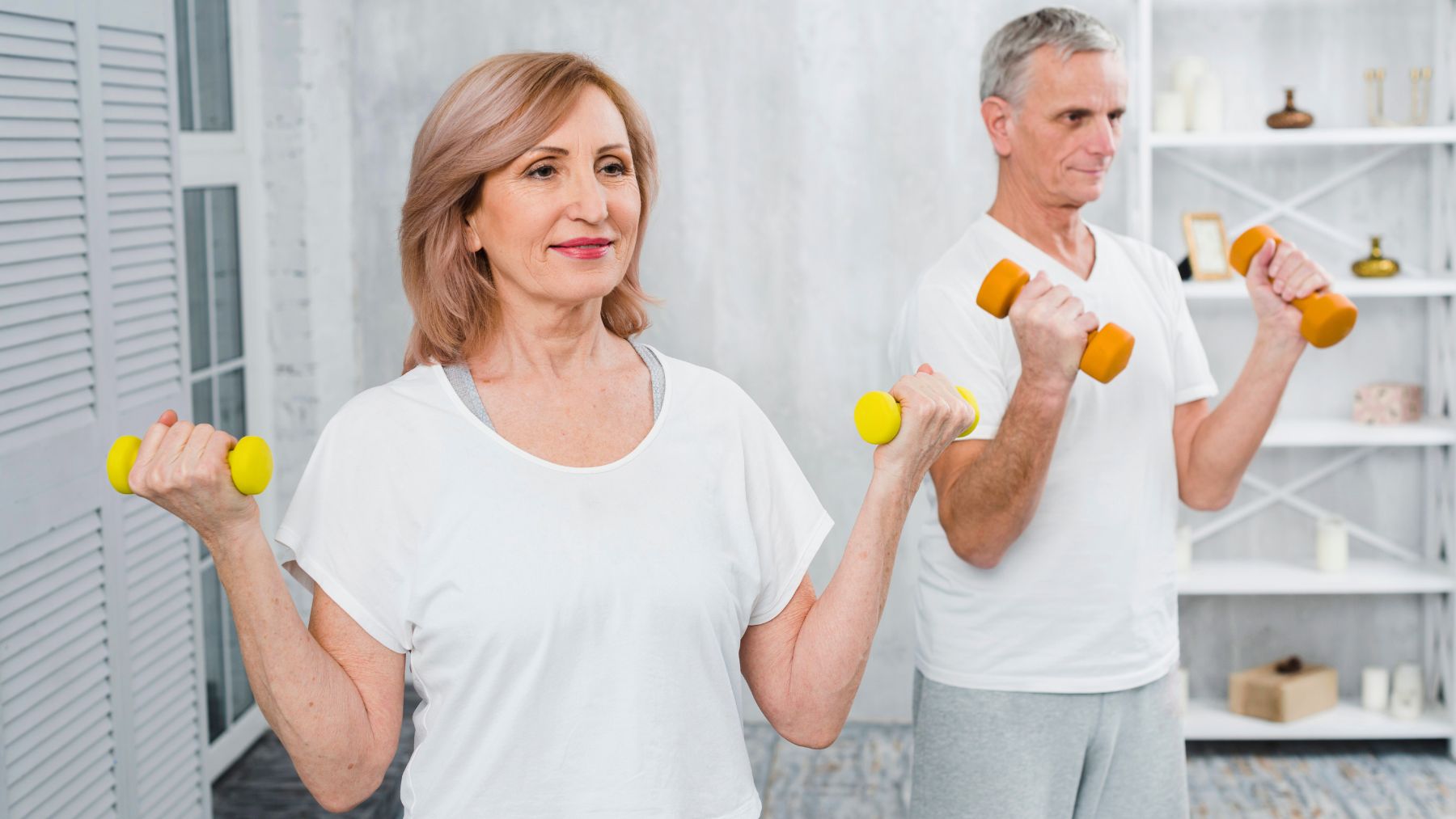Strength training is one of the most effective ways to protect health as we age. It helps preserve muscle, keeps bones strong, improves balance, and lowers the risk of chronic conditions. But not every exercise is safe for older adults, especially if it involves heavy loads or poor form.
One move that stands out for seniors is the lateral raise with dumbbells. It strengthens the shoulders and improves posture, but it comes with a key condition: it should only be performed with light weights. Here, we’ll explain why this exercise is so effective, how to do it correctly, and other options that complement a safe strength-training routine after 60.
Lateral raises with dumbbells for seniors
The lateral raise works the deltoid muscles, especially the middle head of the shoulder. For seniors, that means better shoulder stability, greater arm mobility, and stronger upper body support for daily activities. Carrying groceries, reaching overhead, or even maintaining an upright posture all rely on this muscle group.
The catch is that heavy weights can put unnecessary strain on the shoulder joint, which becomes more vulnerable with age. That’s why experts stress that lateral raises should only be done with light dumbbells. Using weights that are too heavy increases the risk of rotator cuff injuries and can limit the range of motion instead of improving it. The goal isn’t maximum load, but controlled movement and consistency.
To perform the exercise, sit or stand with a dumbbell in each hand, arms at your sides, palms facing in. With a slight bend in your elbows, lift the arms out to the sides until they’re level with your shoulders, forming a “T” shape. Pause briefly, then lower them slowly. The controlled descent is just as important as the lift, since it helps build strength without straining the joint. Try 2 or 3 sets of 12 to 15 repetitions using light weights.
When done correctly, lateral raises not only build shoulder strength but also enhance posture, reduce stiffness, and make everyday tasks easier. They’re also low-impact, which makes them safer than more demanding lifts. The key condition remains constant: light weights, steady form, and no rushing the movement.
Other strength exercises for seniors
While lateral raises are an excellent choice, a well-rounded strength program should target multiple muscle groups. Seniors can combine this exercise with other safe movements to keep the body balanced and strong.
- Bicep curls with dumbbells: Strengthens the arms and supports grip strength, which is important for independence.
- Lunges with dumbbells: Builds leg power and balance, helping prevent falls.
- Wall push-ups: A bodyweight move that strengthens the chest, shoulders, and arms without stressing the wrists.
- Seated rows with resistance bands: Improves back strength and posture while protecting the joints.
- Chair squats: Builds leg muscles and stability, mimicking a movement used daily when standing up or sitting down.
Together, these exercises complement lateral raises by covering the major muscle groups: legs, arms, back, chest, and core. They can be adjusted with lighter weights, bands, or just bodyweight, depending on fitness level. This way, you can create a routine that supports independence, balance, and vitality during your senior years.

